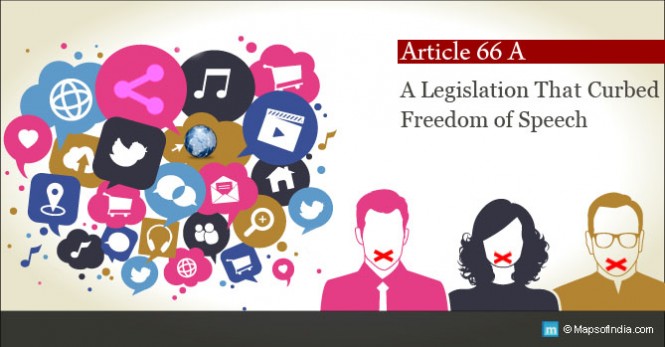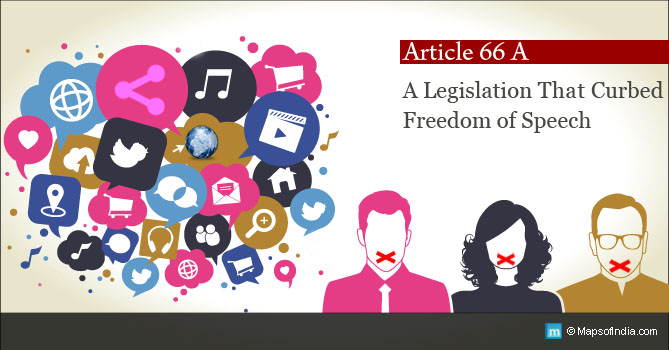 #1 The Article : Article 66 A was the result of an amendment of the Indian Information Technology Act that was enacted in 2008 and enforced in 2009. The article deemed that “sending offensive message through communication service (electronic means)” is a criminal offence. It also stipulated that offenders shall earn a prison term of up to three years and may also need to pay a fine.
#1 The Article : Article 66 A was the result of an amendment of the Indian Information Technology Act that was enacted in 2008 and enforced in 2009. The article deemed that “sending offensive message through communication service (electronic means)” is a criminal offence. It also stipulated that offenders shall earn a prison term of up to three years and may also need to pay a fine.
According to the article, the use of a ‘computer resource or a communication device’ to send “any information that is grossly offensive”, menacing, or known to be false, or any e-mail that causes inconvenience or annoyance or misleads the recipient, is a criminal offence.
#2 The Implications: The ambiguous wording of the article made the law a weak one and foiled its very purpose. The IT Act was initiated to stem the menace of criminal activity, and inflammatory or seditious communication over the Internet or through other electronic means. The vast and largely anonymous web space and growing applications for communication needed a law that would prevent large-scale anarchy similar to the London riots of 2011. The lack of definitions for terms such as “offensive”, “menacing”, “annoyance” etc. has left the provision open to subjective or arbitrary interpretations.
#3 The Implementation: Over the past few years, the article has been used to target political criticism on Social Media networks such as Facebook and Twitter. The right to political thought and expression of dissent through peaceful means has been completely ignored in its implementation. In 2012, in one of the most controversial uses of the article, two girls from Maharashtra were arrested for posting an opinion against a political shutdown of Mumbai on Facebook. In Kolkata, when an eminent academician was arrested for e-mailing caricatures of the CM, not only did students break out in mass protests, the use of the law seemed to facilitate a draconian government. There have been other cases where Article 66A has been implemented to censor Social Media activity.
#4 The Criticism: One of the major criticisms levied against the article is that it goes against the basic freedoms accorded to the Indian citizens by the Constitution of India. Clause (2) of Article 19 of the Indian constitution stipulates that all citizens have the freedom of speech and expression (though the State may impose reasonable restrictions). 66 A of the IT Act seemed opposed to such freedom.
#5 The Demise: The first PIL against the section was filed in 2012. Since then, this article of the IT Act has been the subject of much public outcry. On March 24, 2015, after much debate and deliberation, the Supreme Court of India struck down Article 66A and declared it unconstitutional.
The NDA government had initially defended the article’s validity but also maintained that it fully endorsed the freedom of speech and expression. During the final phase of hearings by the Supreme Court (SC), the NDA government assured the court that a number of measures would be taken to ensure that it is not abused. The bench of SC justices rejected this plea on the grounds that the Modi-led government could not make such a promise for its successors as well. “Governments come and go but section 66A will remain forever”, said the SC bench consisting of Justices R F Nariman and J Chelameshwar.
Section 66 A of the IT Act was introduced during the Congress-led UPA regime. The party admitted that the poor draft of the law made it necessary for it to be struck down by the SC. The SC has, however, upheld the validity of Article 69B (another article that was challenged), which now allows administrators to block websites with content that may disturb communal harmony and social order.





